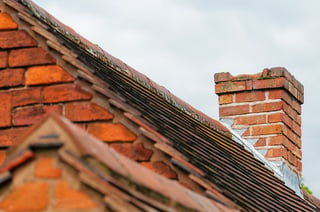At first glance, it may seem like a  reasonable way to rid your fireplace of creosote – that black, sticky substance that results from burning wood: You take a chemical compound – a powder or a liquid – and pour or spray it onto a fire. As the fire burns, it supposedly breaks down that residue and minimizes future buildups. And this is a good thing because creosote is highly flammable and only a small amount can trigger a chimney fire.
reasonable way to rid your fireplace of creosote – that black, sticky substance that results from burning wood: You take a chemical compound – a powder or a liquid – and pour or spray it onto a fire. As the fire burns, it supposedly breaks down that residue and minimizes future buildups. And this is a good thing because creosote is highly flammable and only a small amount can trigger a chimney fire.
Before you run to your favorite home improvement store and purchase such a compound, heed the advice of the experts. They say there is no substitute for an annual chimney sweep to tackle three hazards in particular: fire, the deterioration of your chimney and carbon monoxide (CO) poisoning.
Chemicals Alone Cannot Scrub Creosote
While many people were enjoying visions of sugar-plums last December, First Quality Roofing & Insulation was thinking about our customers' chimney safety. This is why we published the article, “Did Santa leave a reminder next to his plate of cookies? It could be time for a chimney sweep.''
This article explained the purpose of a professional chimney sweep is to remove soot and creosote, usually with a shovel or professional-grade vacuum. We also pointed out that the National Fire Protection Association and the Chimney Safety Institute of America recommend homeowners schedule an annual chimney inspection, which may or may not lead to a chimney sweep. It depends on the amount of creosote that has accumulated since the last chimney sweep.
The CSIA correctly notes some professional chimney sweeps use chemicals in conjunction with the mechanical brushing of a chimney. But it urges homeowners not to use the chemicals “to the exclusion of conventional chimney inspections and cleaning.”:
- “The CSIA believes that the use of these products alone is not an adequate substitute for mechanical chimney cleaning and inspection because it does not provide the same level of protection to the chimney system. Chimney inspections often reveal hidden problems that could be potentially hazardous.”
Avoid the Hazards
Chimneys pose three somewhat interconnected hazards:
- Fire. It cannot be helped: each time you light a fire in your fireplace, some soot and creosote is left behind on the chimney walls. Without a regular chimney sweep, this buildup can accumulate so much that it sparks a fire with hotter temperatures than the fire down below. Some chimney fires are minor and go out on their own. But the ones fueled by creosote buildup can move with frightening speed and ferocity, sometimes not giving homeowners sufficient time to evacuate.
- Structural damage. One fire can damage the mortar of the chimney walls, compromising its integrity and enabling subsequent fires to cause even more damage. This vicious cycle can be stopped by only by preventing the creosote from building up in the first place.
- CO poisoning. A weakened chimney acts as a conduit for a greater release of carbon monoxide – an odorless, colorless gas is called “the silent killer” because homes can fill with toxic levels of this gas before people realize something is wrong. Other chimney problems also can lead to a buildup of CO, including a blockage, rusted heat exchanger or broken chimney connector pipe. All of these conditions should come to light during an annual chimney inspection.
With Santa long gone, leave it to First Quality Roofing & Insulation to inspect your chimney. We'll eliminate any hazards so only visions of sugar-plums dance through your head – all year long. Download our guide of Questions to Ask When Choosing a Roofing Company for more tips.
















